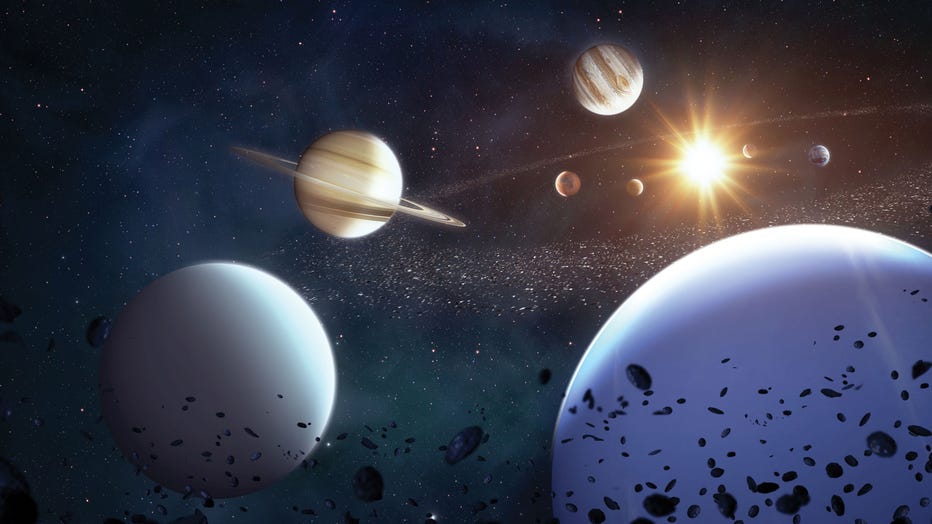'Planet parade' time: Guide to the 6-planet alignment in June

NASA ordered to give moon its own 'time zone'
The Biden administration has given the space agency until the end of 2026 to hammer out a new "time zone" specific to the moon. LiveNOW from FOX's Josh Breslow spoke with Professor Catherine Heymans, Scotland's Astronomer Royal about the reasons behind this.
Skywatchers are in for a treat on June 3, 2024, when a rare alignment of six planets will be visible in the pre-dawn sky.
This celestial event, known as a "planet parade," will feature Mercury, Mars, Jupiter, Saturn, Uranus, and Neptune lining up in a spectacular display.

FILE - Illustration of the Solar System viewed from beyond Neptune, with all eight planets visible around the Sun, created on April 14, 2016. (Illustration by Tobias Roetsch/Future Publishing via Getty Images)
What is a planet parade?
From Earth's perspective, a planet parade occurs when multiple planets appear close together in the sky. Although the planets don't form a straight line, they will be close enough to create a stunning visual spectacle.
How to see planet parade
To catch this rare event, look towards the eastern horizon about 20 minutes before sunrise. The alignment will stretch from the low eastern horizon, with Jupiter closest to the horizon, up through Mercury, Uranus, Mars, Neptune, and Saturn.
According to Astronomy Magazine, finding a location with a clear, unobstructed view of the eastern horizon is crucial for the best experience.
Planet parade viewing tips
- Timing is Key: Plan to observe around 20 minutes before sunrise. This is when all six planets will be most visible.
- Clear Skies: Ensure you have a clear view of the horizon without obstructions like trees or buildings.
- Light Pollution: For optimal viewing, try to find a location with minimal light pollution. Rural areas or designated dark-sky sites are ideal.
- Binoculars or a Telescope: While Jupiter, Mars, Saturn, and Mercury can be seen with the naked eye, Uranus and Neptune are much fainter and will require binoculars or a telescope, according to Star Walk, the popular stargazing app.
What to expect
- Jupiter: The brightest of the planets in this alignment, easily visible to the naked eye.
- Mercury: Visible without aid but low on the horizon, so a clear view is essential.
- Mars and Saturn: Both will be prominent and easily distinguishable.
- Uranus and Neptune: These planets are much fainter and will require binoculars or a telescope to be seen clearly
Additional stargazing tips
Using a stargazing app like Sky Tonight can enhance your experience. These apps help identify planets and provide real-time sky maps to locate celestial objects accurately. They can also help you plan your observation by providing rise and set times for the planets.
Future Planetary Alignments
If you miss the June 3 alignment, there are more opportunities to observe planetary parades. Another notable event will occur on August 28, 2024, featuring another pre-dawn alignment of six planets.

